Process
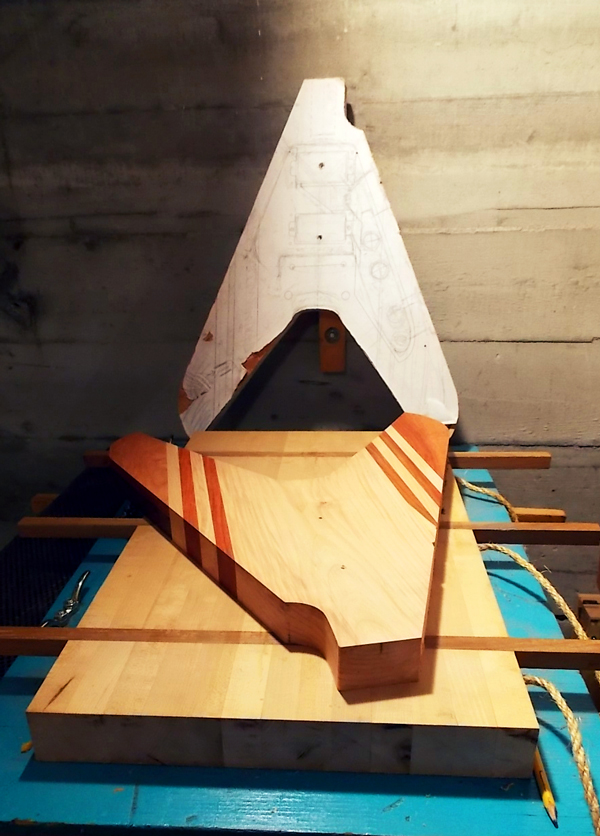
It always starts with a drawing — Sometimes it's in a journal or on a napkin, but eventually it will be a digital vector drawing, meaning that I can refine the lines and experiment at will without the necessity of reproducing the entire drawing over and over again, and I can make use of photographs for woodgrain and hardware. Then, when I'm sure I like something, i just go to a printer and get a few copies of it at full size so I can use it to build the jigs, molds and patterns that aid greatly in reproducing the design faithfully.
If you commission a unique guitar shape from me, we will have a thorough and open communication during the design process, where I will ask for your input or any kind of source reference —for instance, you might say that you want "A mix between a B.C. Rich Mockingbird, and Jerry Garcia's guitar, and Trey Anastasio's Guitar." Or you might have a rough or detailed sketch of what you have in mind - We won't go forward with a project until you're happy with it, but I do reserve the right to turn down horrible ideas (but I promise to be gentle). That said, I am definitely more likely to get into a radical or eccentric idea than a lot of other luthiers out there. Leopard print & Purple Velvet? Let's talk about it!
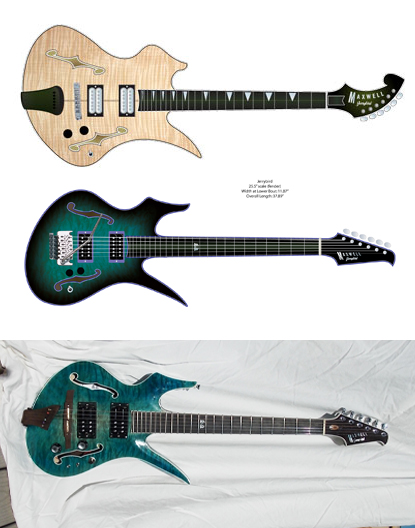
Electrics are a lot of fun for me to think about at this point, because the possibilities of expressive form are so open, within such simple parameters. It's also fun to consider the sonic possibilities that open up with the electric —from custom pickups to onboard effects modulation, I am totally interested in hot-rodding to your specs. Or perhaps you favor a more traditional or familiar set-up —I assure you I can accommodate your fancy.
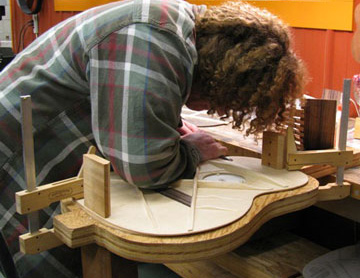
Acoustic construction is quite complex compared to solidbody or even semihollow construction. Every step of processing and assembling the components is more crucial and determinate of the guitar's sound. The soundboard must work like a speaker, and like a speaker the way it is constructed will affect the sound. The back and sides act much like a speaker cabinet, containing, sustaining and directing the sound through whatever soundholes or soundports exist on the instrument. A percussive player might appreciate a stiffer and more rigid bracing with more snap, twang and compression, while a lead or fingerstyle player might like the open, round resonance of the more graceful and delicate structure of a scalloped bracing pattern. This is a crucial decision in the construction of an acoustic guitar, and I am most interested in suiting the needs of the player, so don't leave out any details about your preferences, including artists, sounds, playing style, etc
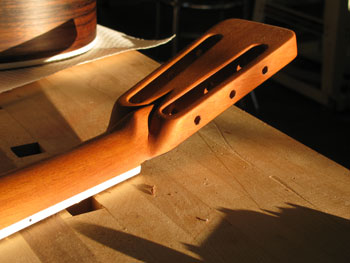
A number of other things come into play with an acoustic that you might not think about unless you're a builder. Consider the butt-wedge (ahem -as it's called), down at the center of the lower bout where the strap button goes; think of the heel of the neck and the diamond under the headstock joint and the rosette. These are some of the most common areas where the issue is almost completely stylistic (except, perhaps the heel- some shapes can interfere with upper register access on cutaways), and are the most available areas to give some distinguishing visual personality to your instrument. Browse the web and look at guitars you like, taking note of these elements. A lot of radical things are being done with acoustics from which you should definitely draw inspiration if considering a custom-built acoustic guitar. Get an idea of what you want before we talk, and we'll get there together much faster.
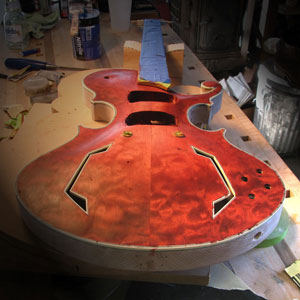
Any number of things are possible in terms of color or more complicated and stylized aesthetic finishing processes. In general I use high quality aniline-based dyes and opaque pigments with Cardinal Nitrocellulose Lacquer and other solvents. Wanna do something with an illustration? A Bas Relief? A Steampunk artifact? Let's talk about it.